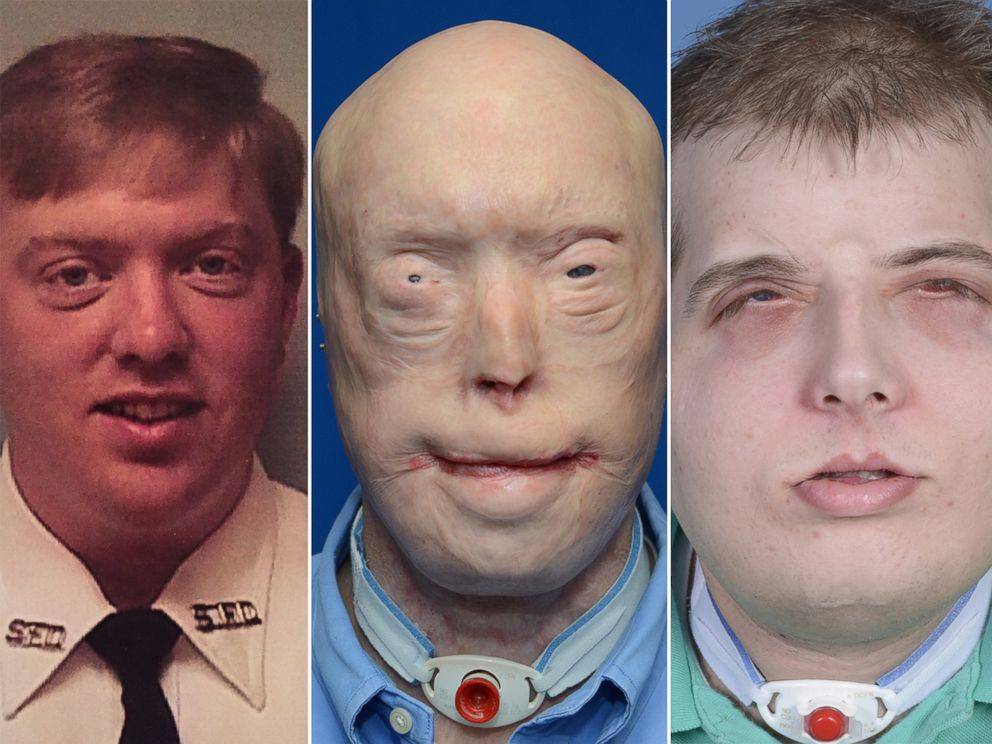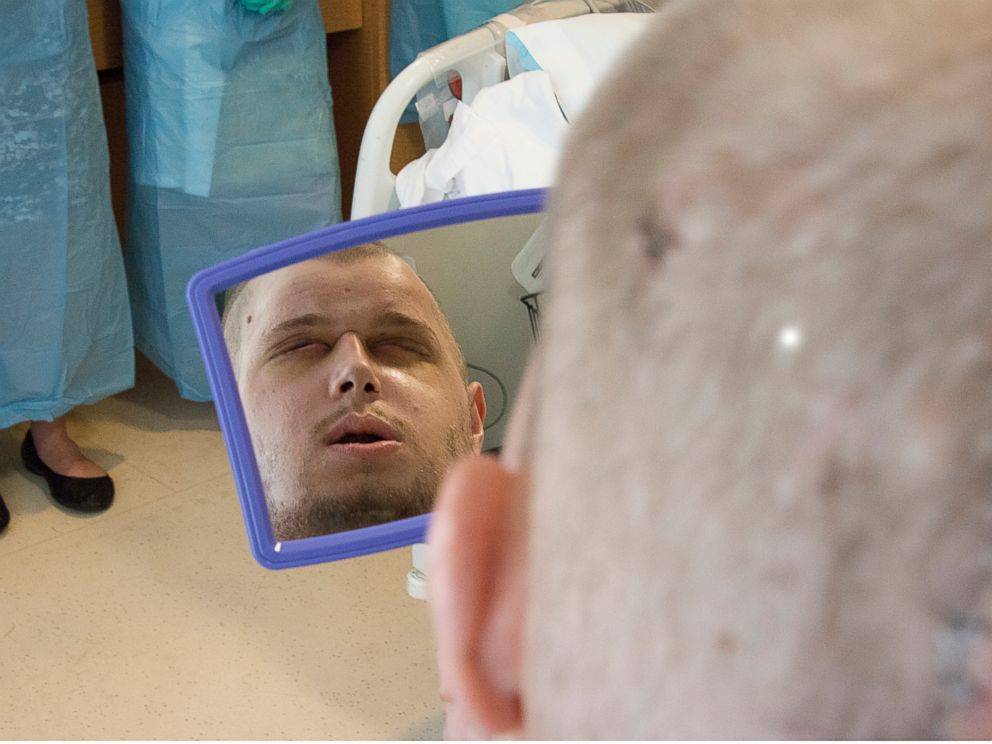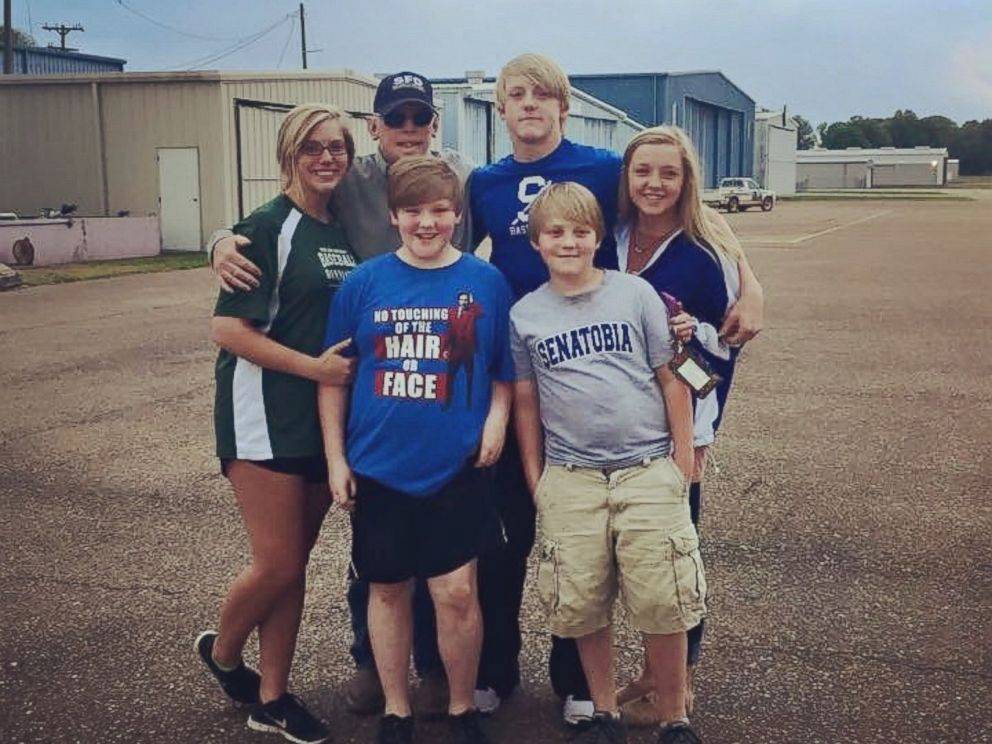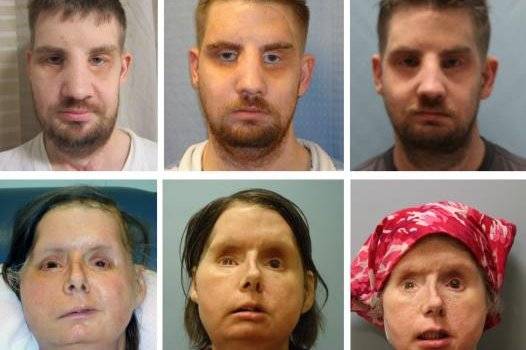Tune in to "Nightline" at 12:35 a.m. ET this week to watch the full story...
Unprecedented Face Transplant Surgery Gives Former Firefighter Hope for a Better Life
Nov 15, 2015 - Being a volunteer firefighter meant everything to Pat Hardison, but when an accident during a rescue mission left his face severely burned, he thought he would never be the same again. “It was terrible,” Hardison, 41, told “Nightline." “I mean, I left home one day a normal dad, leaving to go to work, just a blonde-haired, blue-eyed-- that had everything going, I thought, and just like that everything changed drastically.”
Unprecedented Face Transplant Surgery Gives Former Firefighter Hope for a Better Life
Nov 15, 2015 - Being a volunteer firefighter meant everything to Pat Hardison, but when an accident during a rescue mission left his face severely burned, he thought he would never be the same again. “It was terrible,” Hardison, 41, told “Nightline." “I mean, I left home one day a normal dad, leaving to go to work, just a blonde-haired, blue-eyed-- that had everything going, I thought, and just like that everything changed drastically.”
But 14 years later, Hardison got the call to come to NYU Langone Medical Center in New York City, where a surgical team, led by renown reconstructive surgeon Dr. Eduardo Rodriguez, who is the chair of the hospital’s Wyss Department of Plastic Surgery, would prepare him for the most extensive face transplant ever performed. It was a procedure so extreme and so risky that his doctors warned him he only had a 50-50 chance of surviving it. But it was a risk he was willing to take for the chance to get his life back and feel normal again. “I prayed daily that there would be a miracle to help me get through this, and you know, it’s all in God’s timing,” Hardison said.

Pat Hardison is shown here before the 2001 fire (left), then before his face transplant(center), then after transplant (right)
In 2001, Hardison and his second wife Chrissi were raising their three children in his hometown of Senatobia, Mississippi. At 27, he was a charming, successful salesman who ran the family tire business, but his real passion was working with the local volunteer fire department where he was a captain. “It was my way of life, that was what I did,” he said. “I didn’t do it to make a living, I did it because I loved it... at this department it’s different. It’s not like a fire department that volunteers, we’re a brotherhood.” It was a brotherhood made up of the kind of men willing to rush headlong into a burning home, which is exactly what Hardison did on Sept. 5, 2001. “It was just a normal day,” he said. “Just like every other fire... we went in looking for a lady.”

Pat Hardison sees himself for the first time on Aug. 24, 2015, after his face transplant surgery
Hardison and his fellow firefighters got the call to respond to a house fire, and when they arrived, he entered the building with three other firefighters. He doesn’t remember much of what happened next, except the ceiling collapsing around him. “[My mask] was melting to my face,” Hardison said. “My hose [was] already melted.” He pulled the mask off, held his breath and closed his eyes, which doctors say saved his throat and lungs from smoke inhalation damage and from losing his vision. He doesn’t remember exactly how he managed to escape the inferno but by the time he got out, he was unrecognizable. “There was nothing left of his face to tell you who he was,” said Bricky Cole, one of Hardison’s friends and another volunteer firefighter on-scene that day.

Pat Hardison is shown here wearing a baseball hat in this family photo before his face transplant surgery
His friends rushed to save Hardison’s life, but they didn’t realize who they were working on until he was being loaded into an ambulance. “He pulled me down over his face… and said, ‘you got to take care of Chrissi and the kids,’ and my world shut down,” said Cole. “You never think it’s going to happen to you or yours. We closed the door on that ambulance and I figured it was the last time I would ever see him alive.” Hardison spent the next 63 days at the hospital recovering from the burns that took his scalp, ears, eyelids, nose and lips. His entire face was gone. When he got home, Hardison said his three children, Alison who was 6, Dalton who was 3 and Averi who was 2 years old at the time, were terrified of him. “My kids were scared to death of me. You can't blame them. They’re young kids,” he said. “And you got to realize … we always did stuff every day, and all of the sudden that changed just overnight.” His oldest child Alison said she didn’t realize what her dad had gone through until the first time she saw him, “and I remember going up the house and my mom and step-dad literally had to drag me into the house because I was scared,” she said, fighting back tears.
MORE




